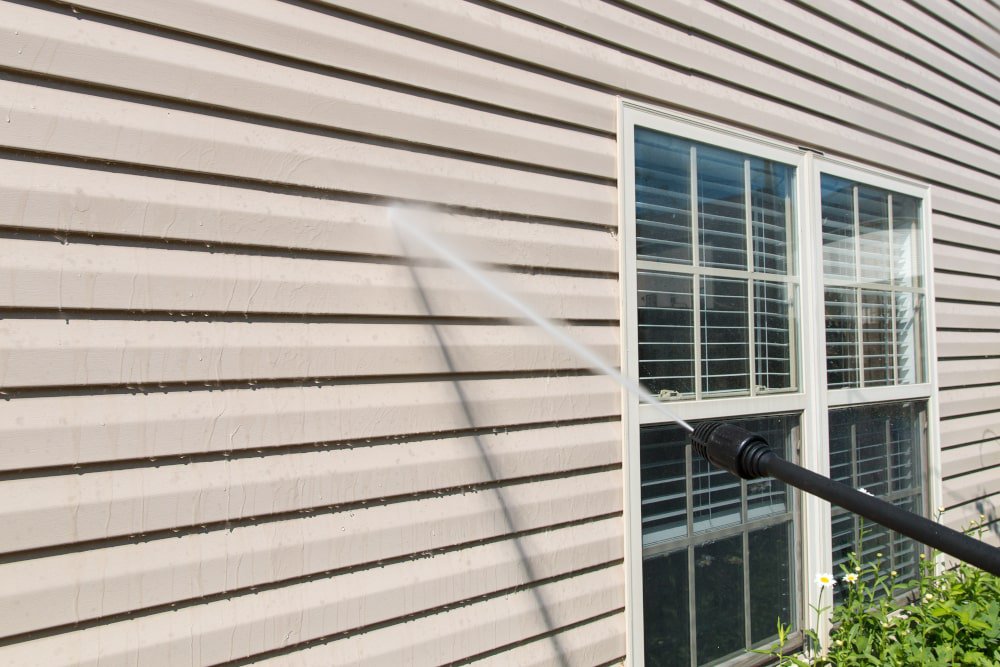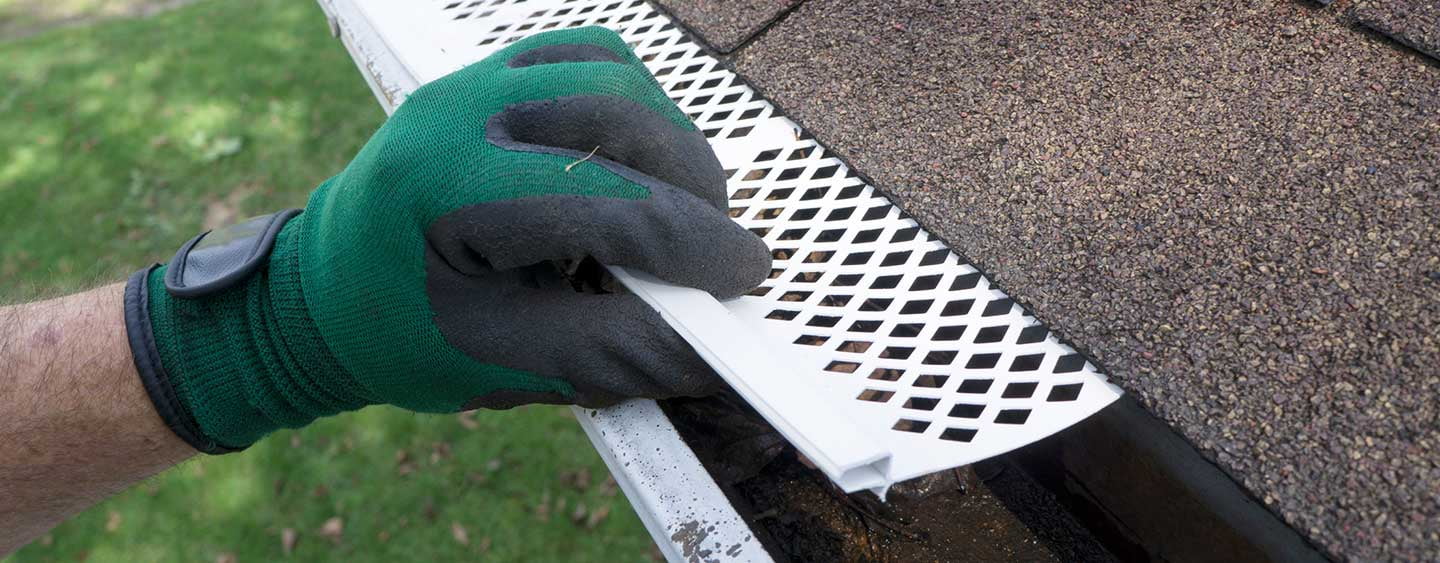
Vinyl siding is a popular option for many homeowners due to its affordability and durability. However, without proper cleaning and maintenance, it can easily become covered in dirt, stains, and mildew.
Luckily, with the right tools and supplies, anyone can achieve clean and beautiful vinyl siding that they can enjoy for years to come.
Preparation for Cleaning Your Vinyl Siding
Cleaning vinyl siding requires the right tools for the job, as well as a plan of action. There are a number of factors that should be taken into account prior to using any cleaner or other products on your vinyl siding.
First and foremost, you will need to select an appropriate cleaner that has been designed specifically for vinyl siding. Do not attempt to use regular household cleaners such as bleach or detergents, as these can damage your siding irreparably over time - instead, look for a specific product made by a reliable brand with special ingredients formulated to safely clean without damaging your home’s exterior surface.
Once you have selected your cleaner, make sure all of your previous steps are completed beforehand so that no further damages occur during the cleaning process itself.
Finally, check the weather forecast ahead of time – there must not be any rain expected within 24 hours of finishing up your work outside, since moisture can cause issues with certain types of cleaners.
How to Properly Clean Vinyl Siding
Cleaning vinyl siding is an important part of home maintenance, and can help protect your home’s exterior by removing dirt, dust, and grime that can damage paint and cause discolouration over time. Proper cleaning techniques should therefore be used to ensure that no damage is done.
Removing Stains
Removing stains from vinyl siding requires an understanding of what types of products are effective at cleaning it without damaging or discolouring the material:
- Detergent: Mild soaps with no abrasives work best on any dirt or mildew spots.
- Bleach: Strong bleaching agents may help remove tough substances such as oil and grease.
- Distilled White Vinegar: Vinegar works great for removing mould and mildew from vinyl surfaces.
When tackling stubborn stains, it is also important to consider using more aggressive methods, such as scrubbing or pressure washing. These approaches should only be used if all else fails, since they have a greater potential for causing damage.
Scrubbing
Scrubbing your vinyl siding is an essential part of keeping it clean. This process is a must to get rid of dirt, grime, and stains that accumulate on the siding over time.
The key to successful scrubbing lies in selecting the right kind of brush or pad for the job. For instance, if you want to remove deeply embedded dirt from your vinyl siding, using a stiff bristle brush with long strokes may help you achieve great results. On the other hand, if there are stubborn mould and mildew spots, then using a soft-bristled brush together with some cleansing solution might do wonders.
If both these brushes fail to make any difference, then switching to an abrasive pad could work well too.
Pressure Washing
Pressure washing involves using high-pressure streams of water from a nozzle at different angles to remove debris from surfaces. This method is more effective than scrubbing alone in dislodging stubborn stains and caked-on dirt. Additionally, it can reach higher up on the walls compared to manual cleaning.
To ensure great results when pressure washing, use only low-pressure settings appropriate for your type of siding. The distance between the surface and the nozzle should also be kept at least 12 inches apart; any closer would increase damage risk due to concentrated power.
Rinsing
Once the pressure washing is complete, it’s time to move on to rinsing. This step involves using a garden hose with a spray nozzle attachment and working from top to bottom with sweeping motions as you rinse off the siding.
Thorough rinsing ensures that dirt and grime have been washed away - without proper rinsing, particles can remain on your vinyl siding and cause discoloration or staining over time. It also helps prevent any damage caused by the accidental use of harsh chemicals during the cleaning process, and can help restore areas affected by fading due to sun exposure.
To successfully rinse your vinyl siding, there are five important steps you should take:
- Start from the top of the house and work downwards in sections
- Spray with an even motion and avoid high-pressure streams
- Use cold water at low pressure to minimize any risk of damage
- Rinse both sides of each panel completely
- Check for any spots missed before continuing on to another section
By following these steps, you can ensure that your vinyl siding is clean without risking any potential harm or damage.
Also Read: Aluminum and Vinyl Siding Alternatives
Avoiding Damage to Your Vinyl Siding
To avoid damaging your vinyl siding, use a mild detergent with warm water for regular maintenance and low-pressure rinsing, or soft washing with a garden hose for deep cleanings.
It is important not to scrub the surface with abrasive materials or high-pressure washers, as these tools can strip away protective layers from the siding and create permanent damage. When using any kind of cleaner, test it first on a small area before applying it over large sections so you can see how it reacts to the vinyl's surface.
It is also recommended to check regularly for signs of mould growth and replace loose pieces immediately — never attempt to paint over them, since painting may make future repairs difficult due to potential incompatibilities between different types of paints and coatings.
Finishing Touches
Once finished, allow your siding to dry before continuing with other tasks, such as painting or staining. In addition, consider waxing your vinyl siding periodically in order to protect it against inclement weather conditions. Wax helps create an additional layer of protection by preventing moisture from penetrating into cracks and crevices where mould and mildew can grow over time.
Lastly, it’s important to inspect your siding regularly for any signs of fading or cracking due to age or wear and tear, as these issues must be addressed immediately in order to prevent further deterioration down the line.
Taking care of your vinyl siding now will ensure its longevity so that you don't have to spend money on replacing it later. Cleaning and caring for your vinyl siding doesn't have to be an arduous task if done properly, and doing so could mean preserving both the look and quality of your home's exterior well into the future.
At Custom Contracting Roofing & Exteriors, our team of dedicated professionals understands how important it is to clean and maintain your vinyl siding. Reach out to a member of our team today with any questions you may have, or to get the support you need for your cleaning project with ease.
Frequently Asked Questions
Why Should You Clean Your Vinyl Siding?
Vinyl siding offers many advantages over traditional materials, most notably its low cost, durability, ease of installation, and lack of maintenance requirements. However, even with all these benefits, dirt and grime can still accumulate on the surface over time.
Cleaning your vinyl siding regularly helps ensure that it remains looking great for years to come while protecting its structural integrity against potential damage from long-term accumulation of moisture and contaminants. In addition, regular cleaning also prevents mould growth.
How Do You Maintain Clean Vinyl Siding?
The first step to cleaning your vinyl siding is to rinse off any dirty areas with water from a garden hose fitted with a low pressure sprayer nozzle. This will help remove mildew, dust or other debris that may have accumulated over time.
After this initial rinse, use a solution of soap and warm water, along with a soft brush or sponge, to scrub dirtier spots. The solution should be rinsed off completely afterwards so as not to leave behind residue that could damage the material over time.
Finally, for tougher stains such as paint spatters or bird droppings, it is best to apply mineral spirits directly onto the area using either a rag or cotton swab before wiping off and then rinsing again with plain water.





